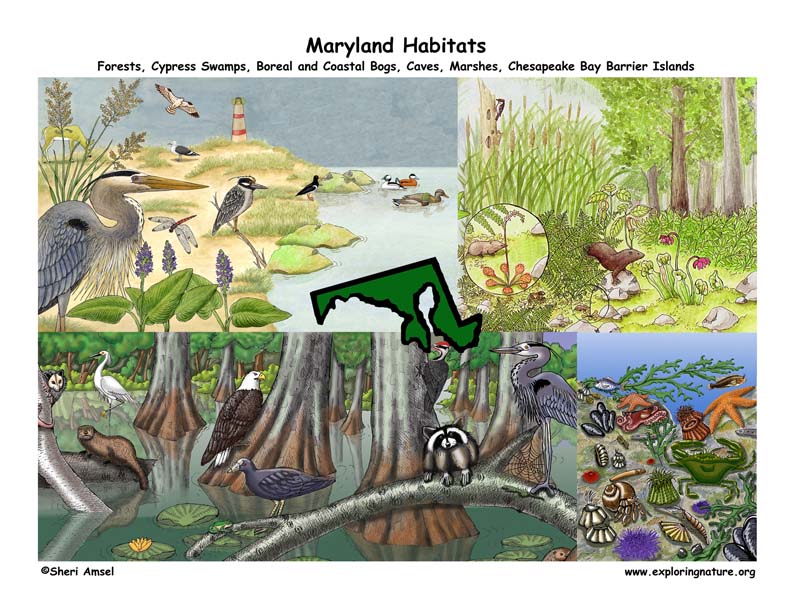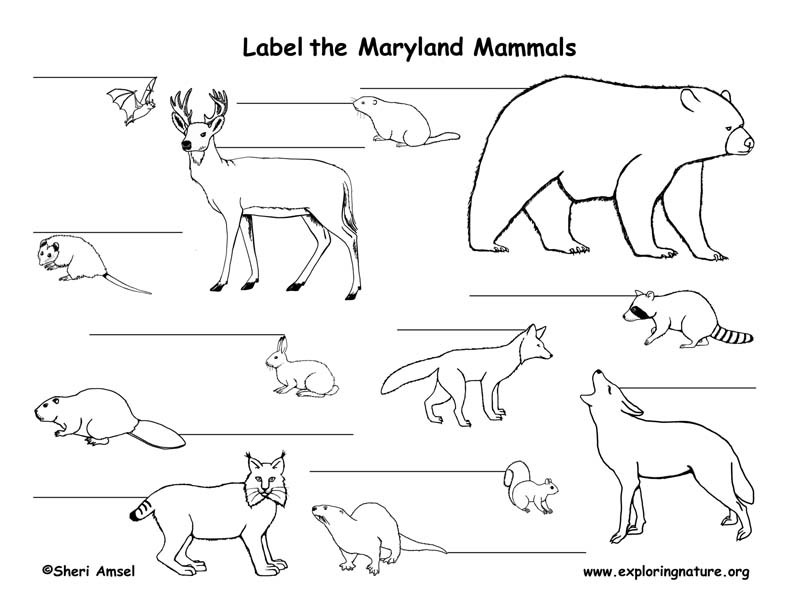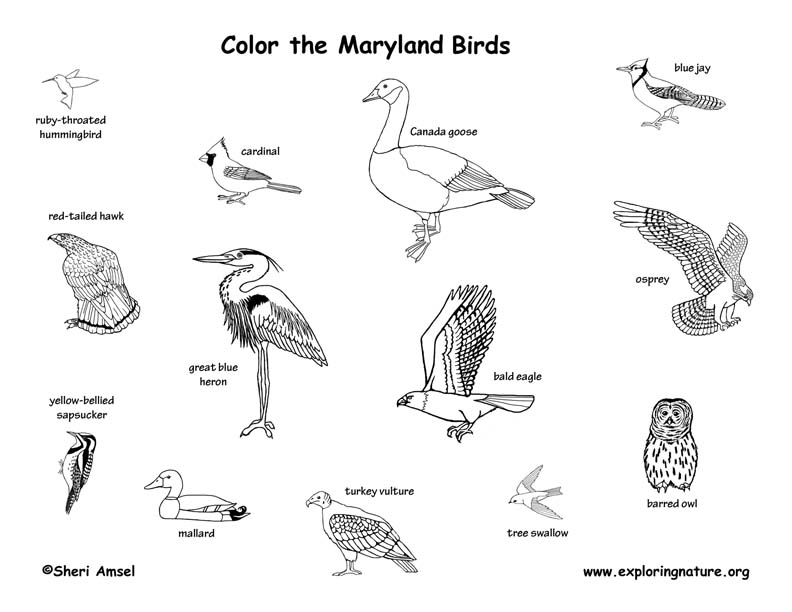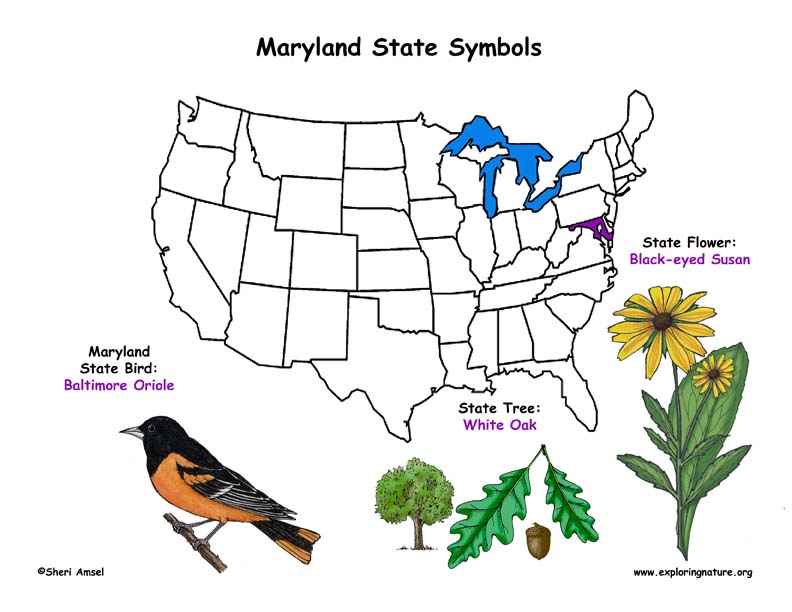

For a relatively small state, Maryland has diverse ecological habitats including forests, shrublands, grasslands, shale barrens, cypress swamps, boreal bogs, caves, coastal bogs, marshes, Chesapeake Bay tidal zones and barrier islands. There are only small pieces of each of these original wild habitats and many are protected in state parks and refuges.
The Appalachian Mountains run through Maryland and are included in the state’s largest area of public land – Green Ridge State Forest (47,560 acres).
Maryland once had grasslands, called The Barrens, that were kept open by grazing bison and fires. This area was heavily mined and settled and today less than 5% of the original habitat remains. Still, some of the original prairie grasses and plants remain in protected areas.
Some of Maryland’s coastal bogs have been restored and protected. They contain many interesting and unique species including carnivorous plants and orchids.
Maryland’s most famous Barrier Island is Assateague Island. With 37 miles of National Seashore, this protected habitat is home to more than 300 species of bird species and a herd of wild horses.
Amphibians
Reptiles
When you research information you must cite the reference. Citing for websites is different from citing from books, magazines and periodicals. The style of citing shown here is from the MLA Style Citations (Modern Language Association).
When citing a WEBSITE the general format is as follows.
Author Last Name, First Name(s). "Title: Subtitle of Part of Web Page, if appropriate." Title: Subtitle: Section of Page if appropriate. Sponsoring/Publishing Agency, If Given. Additional significant descriptive information. Date of Electronic Publication or other Date, such as Last Updated. Day Month Year of access < URL >.
Amsel, Sheri. "Maryland Habitats, Mammals, Birds, Amphibians, Reptiles" Exploring Nature Educational Resource ©2005-2024. December 13, 2024
< http://www.exploringnature.org/db/view/Maryland-Habitats-Mammals-Birds-Amphibians-Reptiles >








